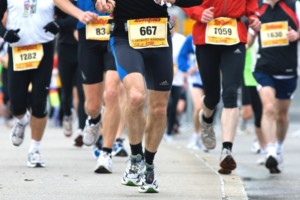Contents
What is proline?
Proline has a unique structure. The side chain of the molecule connects to the protein backbone at two points. This forms a ring which is not part of the structure of other amino acids. This means proline is a secondary amino acid, sometimes called an imino acid. It is the only imino proteinogenic acid of its type therefore people often refer to it as an amino acid. For the purpose of this article, it will be regarded as an amino acid due to its important role in protein synthesis.
L-proline is a non-essential amino acid manufactured mainly from ornithine, glutamine, and glutamate in the liver. It is one of the principal amino acids which the body uses to build collagen.
Collagen is a structural protein which forms the elastic fibres in the skin, bones, ligaments and tendons. Together with lysine and vitamin C, proline is converted into hydroxylysine and hydroxyproline to help form collagen.
Benefits of proline
Healthy skin
The skin is the largest organ of the body, and maintaining healthy skin is important. This is because our skin is the first immune defense protecting the body from infection. The body uses hydroxyproline to synthesis collagen and aid skin elasticity and thickness.
Aged skin is characteristically thinner and less fibrous due to a decline in collagen production. Combined with UV exposure and free radical damage, the skin becomes less smooth and more wrinkled. This loss of texture and structure accelerates the appearance of aged skin.
Research has found that proline supplementation, along with other key amino acids can elevate collagen production. Murakami and colleagues investigated the importance of various amino acids in restoring dermal collagen protein synthesis in mice after exposure to UV irradiation. The researchers concluded that proline along with branched-chain amino acids (BCAAs) and glutamine could enhance collagen synthesis in animals1.
Additionally, proline has been found to increase collagen synthesis in human fibroblast cells together with its precursors, glutamate and pyrroline-5-carboxylate2. Thus, by increasing the availability of this amino acid it may be possible to slow down the aging process and enhance skin health.
Tissue repair
During times of injury where there is soft tissue damage, the body increases proline production. This helps to heal the wound. Animal studies have shown that topical administration of l-proline at the wound site can accelerate healing much faster than oral administration3, 4. Medical dressings that use collagen fragments to initiate wound healing also include this amino acid.
In some cases, a deficiency in proline may be responsible for a higher susceptibility to tears or strains of soft tissues. A lack of this amino acid may also lead to slower than average healing times. For these reasons it’s often recommended to take a proline supplement following a soft tissue injury to enhance collagen production and accelerate healing.
Cardiovascular health
Arteriosclerosis is a process in which the arteries become thick and hard. This is the leading cause of heart disease. This condition develops as the arteries become stiff due to fat accumulating on the walls of the arteries.
This restricts the transport of nutrients and oxygen throughout the body. The reduced blood flow and build up of pressure causes heart attacks.
There is evidence to support the use of proline and other amino acids and vitamins to prevent arteriosclerosis5, 6. This amino acid helps to strengthen the artery walls and protect the endothelium layer7.
Proline deficiency
Proline deficiencies are extremely rare as it is widely available in many different foods. People at risk of having low levels are typically following a protein restricted diet.
Endurance runners and people that participate in prolonged exercise routines may have a greater requirement for this amino acid. This is because it helps to produce and sustain muscle tissue.
When glucose supplies decline, the body will start to break down its own muscle. Boosting proline levels can help to prevent this occurring in competitive athletes.
Additionally people with traumatic skin injuries or severe burns will have a higher need for this amino acid to support tissue repair. People experiencing joint pain from insufficient collagen or cartilage formation may also need supplements.
Dietary sources of proline
Many foods contain proline and most people obtain enough for their needs through a balanced diet. Dairy, meat, and soy products are all enriched with this amino acid.
However supplementation may be necessary for endurance athletes, or when recovering from soft tissue injuries. People wanting to enhance skin health and appearance may also consider supplementation. To facilitate collagen synthesis, you should take proline together with vitamin C.
It’s important to check with a doctor before taking any supplements. High amino acid intake generates higher waste products and this needs to be removed by the kidneys and liver.
This can become a problem if these organs are not already functioning at their best due to a range of diseases. Consequently it’s very important to follow the recommended dosages and ensure that there are no underlying health issues.
References
- Murakami, H et al. (2012). Importance of amino acid composition to improve skin collagen protein synthesis rates in UV-irradiated mice. Amino Acids. Volume 42, Issue 6, (pp. 2481-9). ↩
- Karna E. et al. (2001). The potential mechanism for glutamine-induced collagen biosynthesis in cultured human skin fibroblasts. Comparative Biochemistry and Physiology Part B: Biochemistry and Molecular Biology. Volume 130, Issue 1, (pp. 23–32). ↩
- Ponrasu, T et al. (2013). Efficacy of L-proline administration on the early responses during cutaneous wound healing in rats. Amino Acids. Volume 45, Issue 1 (pp. 179-89). ↩
- Corsetti G et al. (2010). Topical application of dressing with amino acids improves cutaneous wound healing in aged rats. Acta Histochemica. Volume 112, Issue 5. (pp. 497-507). ↩
- Ivanov, V et al. (2007). Anti-atherogenic effects of a mixture of ascorbic acid, lysine, proline, arginine, cysteine, and green tea phenolics in human aortic smooth muscle cells. Journal of Cardiovascular Pharmacology. Volume 49, Issue 2 (pp. 140-5). ↩
- Wong, A et al. (2015). The effect of multiple micronutrient supplementation on quality of life in patients with symptomatic heart failure secondary to ischemic heart disease: a prospective case series clinical study. American Journal of Cardiovascular Disease. Volume 5, Issue 3, (pp. 146-52). ↩
- Rath M. (1992). Reducing the risk for cardiovascular disease with nutritional supplements. Journal of Orthomolecular Medicine. Volume 7, (pp. 153–162). ↩




